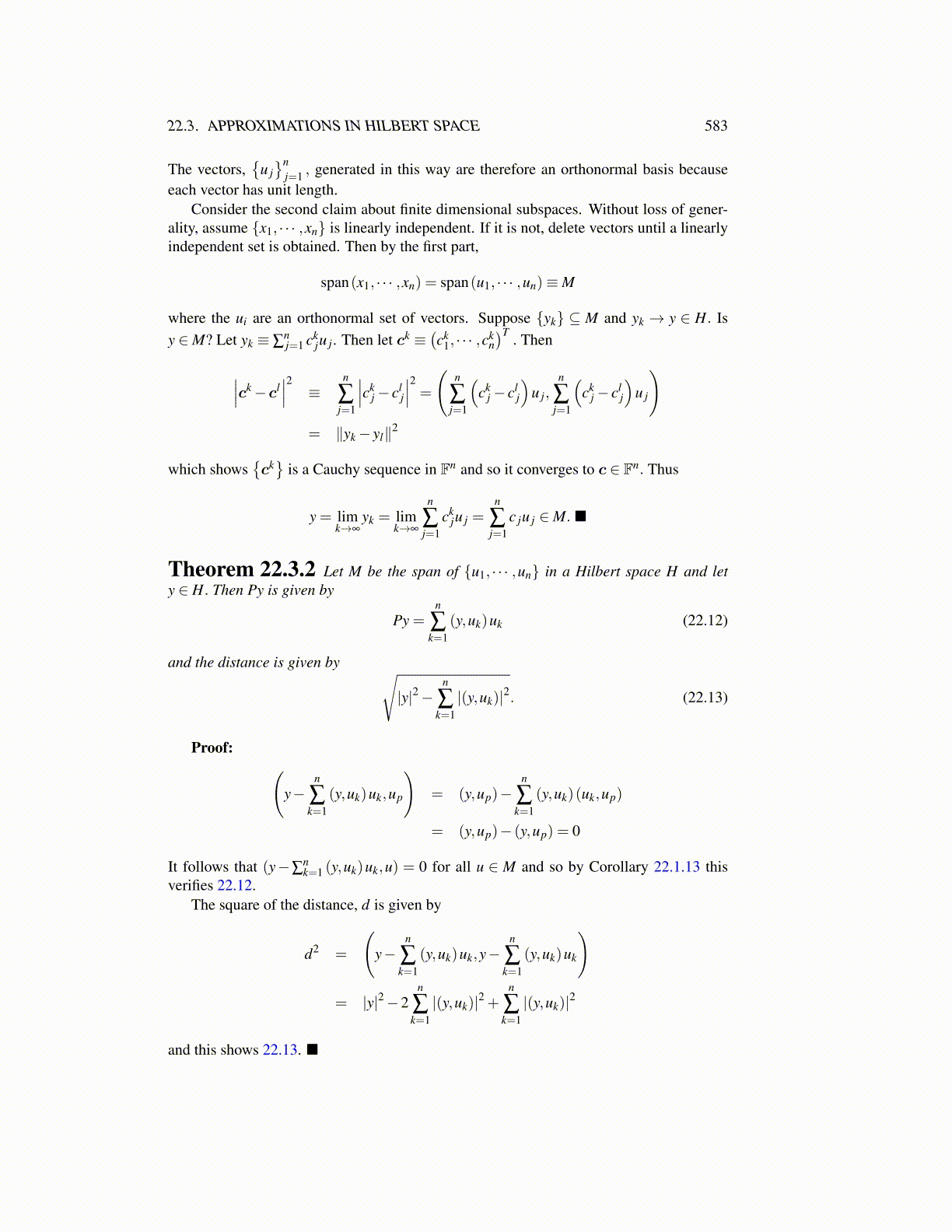
22.3. APPROXIMATIONS IN HILBERT SPACE 583
The vectors,{
u j}n
j=1 , generated in this way are therefore an orthonormal basis becauseeach vector has unit length.
Consider the second claim about finite dimensional subspaces. Without loss of gener-ality, assume {x1, · · · ,xn} is linearly independent. If it is not, delete vectors until a linearlyindependent set is obtained. Then by the first part,
span(x1, · · · ,xn) = span(u1, · · · ,un)≡M
where the ui are an orthonormal set of vectors. Suppose {yk} ⊆ M and yk → y ∈ H. Isy ∈M? Let yk ≡ ∑
nj=1 ck
ju j. Then let ck ≡(ck
1, · · · ,ckn)T
. Then
∣∣∣ck−cl∣∣∣2 ≡
n
∑j=1
∣∣∣ckj− cl
j
∣∣∣2 =( n
∑j=1
(ck
j− clj
)u j,
n
∑j=1
(ck
j− clj
)u j
)= ∥yk− yl∥2
which shows{ck}
is a Cauchy sequence in Fn and so it converges to c ∈ Fn. Thus
y = limk→∞
yk = limk→∞
n
∑j=1
ckju j =
n
∑j=1
c ju j ∈M. ■
Theorem 22.3.2 Let M be the span of {u1, · · · ,un} in a Hilbert space H and lety ∈ H. Then Py is given by
Py =n
∑k=1
(y,uk)uk (22.12)
and the distance is given by √|y|2−
n
∑k=1|(y,uk)|2. (22.13)
Proof: (y−
n
∑k=1
(y,uk)uk,up
)= (y,up)−
n
∑k=1
(y,uk)(uk,up)
= (y,up)− (y,up) = 0
It follows that (y−∑nk=1 (y,uk)uk,u) = 0 for all u ∈ M and so by Corollary 22.1.13 this
verifies 22.12.The square of the distance, d is given by
d2 =
(y−
n
∑k=1
(y,uk)uk,y−n
∑k=1
(y,uk)uk
)
= |y|2−2n
∑k=1|(y,uk)|2 +
n
∑k=1|(y,uk)|2
and this shows 22.13. ■